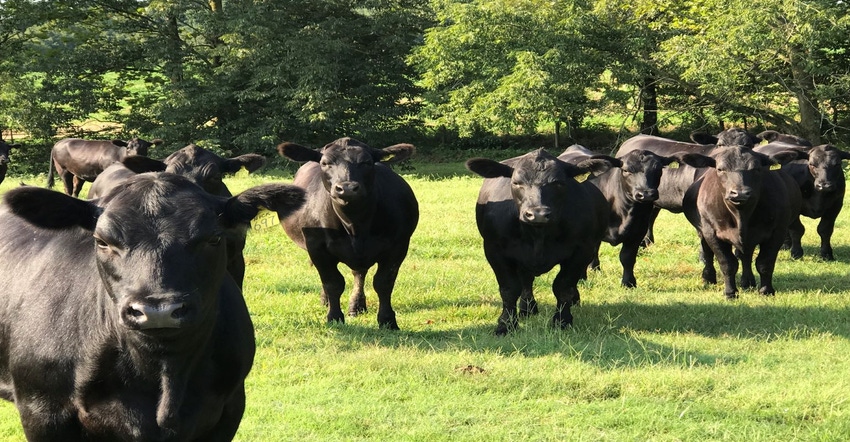It's time to plan for pastures in 2023, use these tips to plan for it.
September 14, 2022

“Man - despite his artistic pretensions, his sophistication, and his many accomplishments - owes his existence to a six-inch layer of topsoil and the fact that it rains.” This quote from Paul Harvey captures a baseline understanding for all involved in agriculture. Though we recognize the importance, soil fertility and health often get put on the back burner as cattlemen juggle day to day tasks caring for their land and livestock. However, to improve pasture health, productivity, and longevity, an effective first step is to get a baseline understanding of soil fertility. Soil sampling cropland and hay acres is fairly commonplace, but pasture poses extra challenges due to topography and grazing utilization patterns. Here are five tips to help you collect representative soil samples of pasture to improve forage productivity through the soil.
1. Plan ahead.
Identify a certified soil testing laboratory that completes the desired analyses. Many laboratories will send collection bags and shipping materials and some cover shipping costs. Utilize the expertise of the lab and/or your area extension specialist to identify the appropriate analysis package to best meet your goals and track soil parameters over time. For example, if the primary goal is to use soil tests to make fertilization decisions, soil pH, organic matter (OM), phosphorus (P) and potassium (K) are critical measurements. If you have some carbon or microbial activity related goals, other soil test packages may be more appropriate. Establish the depth soil cores will be taken at and make sure the lab is aware of core depth at submission. Selected core depths, whether 6 inch or 2-3 inch should be selected based on measured parameters and what guidelines are being used for subsequent fertilization decisions.
2. Make a game plan.
Consider how the soil test results will be utilized to make management decisions. Rather than collecting a whole pasture sample, consider taking samples based on similar management zones or slopes, paddocks, or grid sampling. For areas inaccessible to fertilize, don’t sample. Other areas to avoid sampling include within 150-feet of limestone roads where road dust may influence the soil and areas of concentration like feeding areas, livestock waterers, or loafing areas where significantly higher levels of manure and urine are deposited.
3. Collect a representative sample.
Start with clean sampling materials. Walk in a random, zigzag pattern in the sampling area and take 10-15 cores. Discard and re-sample a core if it looks or feels significantly different from other cores in the composite sample. Remove the grass tuft on top, and compile the cores in a plastic bucket. Thoroughly mix, and then use the mixed cores to fill the soil sample submission bag to the appropriate level. Each soil sample bag submitted should represent 10 acres or less. To speed up the process, draw a line at desired core depth on the soil probe so a ruler will not be needed to maintain consistency.
4. Prioritize limiting nutrients.
With high input prices, it may not be economical to address all nutrient shortfalls in one year, so assess limiting nutrients and prioritize which nutrient applications will provide the most return. The first priority to address is soil pH. Grass-based pastures will tolerate a wider pH range (6.0 - 7.0) while legume-mixed pastures require a minimum pH of 6.5. Legumes have the greatest response to improved pH, so lime application is necessary to increase or introduce legumes into pasture. Correcting soil pH in pasture also favors natural introduction of new grass and legume species. While N is often the first nutrient applied because of the obvious yield response, inadequate levels of P and K can be limiting factors in yield boosts. Correcting P and K from low or very levels to optimum level can improve pasture yield by 65% and 80%, respectively, but application above optimum level typically doesn’t warrant an additional forage yield.
5. Be consistent.
Ideally, sample each pasture every 3-5 years to monitor changes in soil fertility and/or health. Collect at a consistent time of year to reduce the variations driven by environment. For example, the same area sampled in the fall will look different in the spring. Avoid sampling in wet or very dry conditions. Time soil sampling to occur 6-months before desired fertilization to get the best return on investment from the fertilizer input. There are apps available to help track and summarize soil changes over time, but a pen and paper or spreadsheet will do the trick as well.
Adding a week’s worth of grazing can save the cow herd approximately 6% in harvested feed expenses. With high stored feed costs, there is value in prioritizing soil fertility and subsequent forage productivity.
Source:Iowa State University, who is solely responsible for the information provided and is wholly owned by the source. Informa Business Media and all its subsidiaries are not responsible for any of the content contained in this information asset.
You May Also Like



